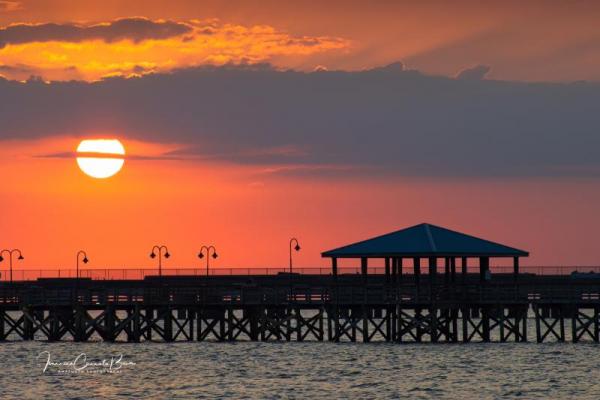History
Mandeville occupies an ancient shelf of high ground formed along the north shore of Lake Pontchartrain during the last Ice Age. This unique geography and its rich ecological diversity made settlement inevitable.
The Tchefuncte People are generally credited as the earliest inhabitants, circa 500 BC. Later indigenous
peoples 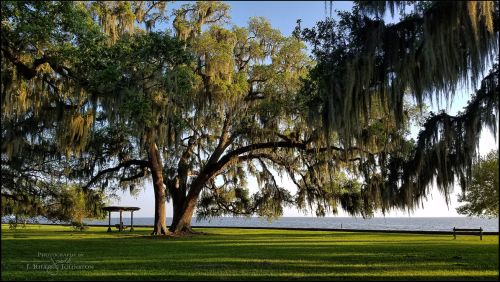 followed; the Marksville culture and later the tribes of the Acolapissa and Choctaw. During the Choctaw period this area, known as West Florida, was under French (1682-1763), British (1763-1783) and Spanish (1783-1810) rule. During the brief period of British control several loyalist sympathizers claimed their grants and settled on what would become Mandeville. They set up charcoal and brick kilns along Bayou Castaine and trade with New Orleans, across Lake Pontchartrain, flowed.
followed; the Marksville culture and later the tribes of the Acolapissa and Choctaw. During the Choctaw period this area, known as West Florida, was under French (1682-1763), British (1763-1783) and Spanish (1783-1810) rule. During the brief period of British control several loyalist sympathizers claimed their grants and settled on what would become Mandeville. They set up charcoal and brick kilns along Bayou Castaine and trade with New Orleans, across Lake Pontchartrain, flowed.
The Marigny de Mandeville family was prominent in the colonization of Louisiana and the development of New Orleans. The grandson of the original Marigny de Mandeville, Bernard Xavier de Marigny de Mandeville (1785-1868), acquired the Antonio Bonnabel tract of approximately 5000 acres on the north shore of Lake Pontchartrain, east of Bayou Castaine, and named it Fontainebleau (1829). This was a working plantation with over 100 slaves farming sugarcane and working a sugar mill and brick kilns.
Fontainebleau provided Marigny de Mandeville an introduction to the land grant families of Morgans, Spells, Faircloths, Bertels, and Smiths to the west and their unusual high ground.
Marigny de Mandeville's acquisition of these properties began in the early 1830s. To support his vision for a new town, he hired Louis Bringier, Surveyor General of Louisiana, to survey and create a plan, which was filed in the New Orleans Notarial Office of Felix d'Armas in January1834.
The street names, so carefully selected after heroes of America's founding (e.g. Jefferson, Monroe, Lafayette), Napoleonic heroes (e.g. Foy, Colbert, Gerard, Lamarque), heroes of the Battle of New Orleans (e.g. Lafitte, Jackson, Coffee, Adair), are a window into the life and times of one of Louisiana's most significant figures: Bernard Xavier de Marigny de Mandeville.
Included in this plan (and in the text of property transfers until the late 1800s) is specific language, amounting to covenants, providing for a market square and a Catholic church. The document describes how the roads would be laid out, how open spaces and water courses would be protected, bridges constructed, and what obligations Marigny de Mandeville would undertake in terms of supporting transport to and from New Orleans (a wharf). Most importantly, the view of the lake was to remain unobstructed and the lake front open space was to be protected from construction "by any individual or corporation" and to be held in perpetuity as a public space for the common use. These covenants continue to be viewed as essential guidance to the management and protection of Old Mandeville today.
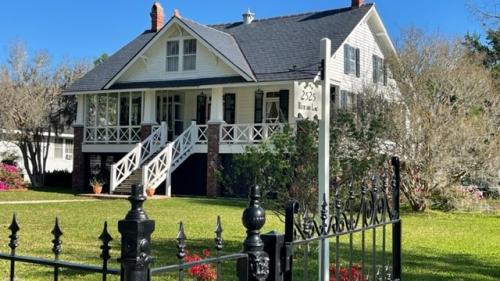 The new town was sold through public auctions held in New Orleans, beginning in 1834. Marigny de Mandeville and his partner, Impresario John Davis, provided passage on the steamer Blackhawk for $1 for interested parties. These potential buyers were met at the new wharf located at the end of Gerard Street (now Girod) by agent Louis Coquillon. The properties moved quickly with many sales to free people of color. There was speculation and rapid turnover. However, many sales resulted in the construction of summer homes.
The new town was sold through public auctions held in New Orleans, beginning in 1834. Marigny de Mandeville and his partner, Impresario John Davis, provided passage on the steamer Blackhawk for $1 for interested parties. These potential buyers were met at the new wharf located at the end of Gerard Street (now Girod) by agent Louis Coquillon. The properties moved quickly with many sales to free people of color. There was speculation and rapid turnover. However, many sales resulted in the construction of summer homes.
The new town offered a respite from the heat and disease common to New Orleans summers. Yellow fever epidemics could easily kill thousands. During the summer months of 1832, it is said that in a city of 35,000 over 6,000 people died. No wonder the wealthy lined up for large lakefront lots, clean water and healthy lake breezes. Several of these homes, built in the 1830s-40s, continue to grace the lakefront today.
Steamer traffic grew as Mandeville developed. The Blackhawk's trips from New Orleans included stops at Madisonville, Lewisburg and Mandeville. Davis' Hotel Mandeville (2000 Lake Street, now Lakeshore Drive) offered a casino and well reviewed restaurant. The economic bust of 1837 created a swift downturn in Mandeville's growth. Auctions of former Marigny de Mandeville properties by Citizens Bank continued and the larger economy soon rebounded carrying Mandeville with it.
Marigny de Mandeville sold Fontainebleau in 1853 and returned full time to his home in New Orleans. He would die from head injuries in a fall on Royal Street in 1868.
The Civil War (1861-1865) created dire conditions in Mandeville. The Union held New Orleans while St Tammany Parish stayed in Confederate hands. A trade blockade, with regular patrols along the lake, put a stranglehold on Mandeville.
Owners of the wharves were told to dismantle them or Union soldiers would burn them. They complied. In a dispatch to his commander, a Union soldier sent to forage supplies on the north shore, writes he hadn't the heart to take what little there was from the desperate people in Mandeville.
After the war, Mandeville began to rebound with increased lake traffic and reestablished trade with the New Orleans. Men swore their Loyalty Oaths to the Republic and it was business as usual.
The population, particularly during the long summers, boomed and services grew in response with hotels, restaurants, casinos, schools, charitable organizations, churches, bakeries, bars and barbershops.
The steamboats were filled with passengers and musicians to entertain them during the crossing. Music venues and organizations flourished. Regular dances were held outdoors at Jackson Park (corner of Jefferson Street and Coffee Street). The Knights of Pythias hosted balls at their hall on Coffee Street. Paul's Exchange, 2025 Lakeshore Drive, held a yearly Bastille Day celebration, complete with cannon fire.
The International Order of the King's Daughters and Sons, at their location Rest Awhile, held balls, maypole celebrations and picnics on their expansive lakefront property in the 2100 block of Lakeshore Drive. This organizations' pursuit of social good, through outreach to the poor and the creation of the parish's first lending library (1898) in Mandeville, lasted for over a century until the sale of the property in 2014. 
The Dew Drop Social and Benevolent #2, established in 1895, continues to host concerts as a city owned venue at 430 Lamarque Street. It began as a benevolent society for the African-American community raising money through dances and events and providing for its members when in need. This venue also created a platform for African-American musicians to perform and develop that most American music: Jazz.
This was Mandeville's Golden Age (1880-1920).
Here is how New Orleans notable, Grace King, described the town writing in 1920:
and piety, for"It is not surprising that the little town of Mandeville is as redolent of good cooking as some other little towns elsewhere are of religion
Fontainebleau had begotten the most beautiful, most charming, picturesque little lake shore town without doubt in the United States. The weary
citizen of New Orleans can still find there seclusion, cool breezes, green shade of century- old oaks draped with moss, a lovely view, and liberty of enjoyment..."
Lumber companies took notice of the valuable resources of St Tammany Parish and arrived in earnest in the 1880s. This brought the railroads. The Poitevent-Farve Lumber Company constructed a line between New Orleans and Mandeville in 1892. They relocated their headquarters from Pearlington, Mississippi to Mandeville in 1913. The company town they constructed between Lewisburg and Mandeville employed hundreds and included a mill, varied housing and dormitories and three churches. The lumber company had ceased operations by 1923.
Ferry and steamer service between New Orleans and Mandeville ended by 1936. Marigny de Mandeville's former plantation became Tchefuncte State Park in 1938. The Civilian Conservation Corps, in the development of the park, destroyed Marigny de Mandeville's old home, the slave village and countless sites of activity of early indigenous peoples. The ruin of the sugar mill is still visible in what is now Fontainebleau State Park.
Railroad traffic continued until the 1980s. A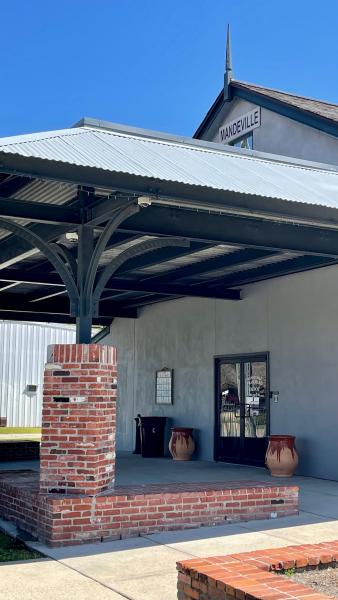 Rails-to-Trails conversion replaced the Illinois
Rails-to-Trails conversion replaced the Illinois
Central RR line with the Tammany Trace.Mandeville's former Depot on Lafitte Street
is a cultural-interpretive center with museum,concerts and outdoor weekend market.
A New Deal project was the construction, under the auspices of the Works Progress Administration (WPA) in 1937, of a concrete seawall for Mandeville. The seawall created a 'first line of defense' against storm surge and steady erosion. It was one of many attempts to hold back the fury of Mother Nature and Lake Pontchartrain.
No 'brief history' of Mandeville can be told without mentioning the effects of the many tropical storms and hurricanes that have menaced the town and its occupants. There is a long list, however, the hurricane of 1915 was particularly damaging with heavy losses to the tree canopy and property. Hurricane Katrina (2005) is the storm that forever changed the face and feel of the town. Many historic properties disappeared in the winds and the 9' storm surge on that fateful day in late August. New FEMA requirements resulted in the elevation of historic homes, changing the face of Mandeville forever, yet inspiring the preservation movement that continues today through the efforts of the town with the development of the Historic District and organizations like the Old Mandeville Historic Association.
The construction of the Lake Pontchartrain Causeway, first span completed in 1956, created a direct path into the unspoiled north shore for suburban development. The longest bridge over water at 23.87 miles, the Causeway ignited a population and construction boom that has not ended. A second span was completed in 1959.
The Old Mandeville Historic District encompasses the core of Louis Bringier's 1834 plan reflecting Marigny de Mandeville's original vision. It is a place that has been 'touched' by history - from 18th century explorations of Iberville and William Bartram (1739-1823), to Revolutionary War naval engagements, to the Civil War's economic devastations. It has been touched by the first strains of Jazz by Bolden, Ory and Armstrong and, through his visits to Mandeville in the 1920's, featured in the prose of Wm Faulkner.
Through special protections, limited real estate and its 'off the beaten path' location, residents of Mandeville's historic district continue to enjoy a relatively quiet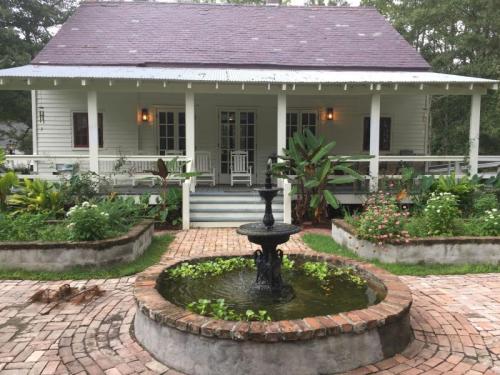 village lifestyle. The pedestrian friendly community celebrates its historic architecture, its unparalleled tree canopy, its bike paths and enviable proximity to Lake Pontchartrain. It is the coveted natural setting that attracted the earliest settlers thousands of years ago that continues to charm today.
village lifestyle. The pedestrian friendly community celebrates its historic architecture, its unparalleled tree canopy, its bike paths and enviable proximity to Lake Pontchartrain. It is the coveted natural setting that attracted the earliest settlers thousands of years ago that continues to charm today.
Used with permission of the Old Mandeville Historic Association and taken from the “Old Mandeville Historic Site Plaque Locations 1834-1942, Vol. 1
Present
The City of Mandeville, gateway to St Tammany Parish and the northshore, enjoys a lifestyle that is quite different from its more populous south shore neighbor, New Orleans. Moving at a slower pace, Mandeville embraces the serenity of its rich natural environment. With its one and one half miles of Lake Pontchartrain shoreline, Mandeville has always been a waterfront and water-oriented community blessed with a temperate climate amid a lush canopy of live oaks, magnolia, cypress and pines. The waterways, Bayou Chinchuba, Bayou Castine and the Ravine aux Coquilles, that flow through Mandeville abound with wildlife: squirrels, rabbits, opossums, raccoons, deer, plentiful freshwater and salt water species of fish and abundant bird and waterfowl communities.
The 'built' environment exhibits a well-integrated sense of quality, scale and proportion. Planning guidelines have established spacious lot sizes, protective building setbacks and a commitment to managing residential and commercial development densities. To insure that the tree canopy of pines and hardwoods retain dominance as the community's vertical element, there is a construction height limitation of 35 feet.
Beginning in 1995 with the establishment of the Tree Board, now the Parks and Parkways Commission (2003), and long-time recognition as a Tree City USA member, landscaping regulations have been adopted that preserve existing trees and vegetation and require the replacement of trees lost to development and storms. Low-rise, landscaped monument signs have been adopted through sign regulations to minimize visual clutter.
The City of Mandeville embraces the future while protecting, through thoughful planning, its natural setting and enviable quality of life.
